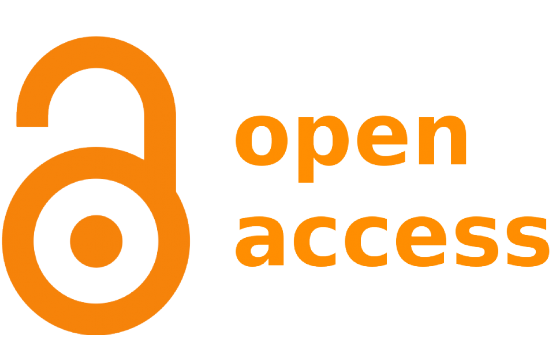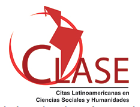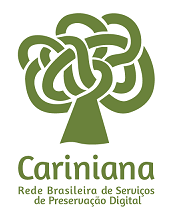O discurso da COVID como fenômeno cultural na Ucrânia em 2020-2022
DOI:
https://doi.org/10.5433/1679-0383.2023v44n1p53Palavras-chave:
COVID-19, Vacinação, Redes sociais, Folclore, MemesResumo
The article problematizes the formation of the topic of COVID-19 as part of the Ukrainian cultural discourse. Within the scope of this study, a repository of representative samples of literature was formed, texts of modern folklore devoted to this topic, as well as selections of poetic works were analyzed. The features of communication during the pandemic and its influence on literary creativity have been established. The conducted research made it possible to come to conclusions about the presence in Ukrainian culture of a scheme for dealing with crisis phenomena such as the COVID-19 pandemic, which involves the formation of a layer of folklore works at the first stages of working on the topic, then - working on it in the form of poetry, performances, etc., creating prose texts and new layer of folklore at the final stage of assimilation of the phenomena by the cultural discourse.
Downloads
Referências
AMICI, Patrizia. Humor in the age of covid-19 lockdown: an explorative qualitative study. Psychiatr Danub, Zagreb, v. 32, n. 1, p. 15-20, sept. 2020. Available in: https://pubmed.ncbi.nlm.nih.gov/32890355/. Access in: 23 aug. 2023.
BARANOVA, Ancha. Knyha koronavirus: instruktsiia z vyzhyvannia. Kiev: Nash format, 2020.
BISCHETTI, Luca; CANAL, Paolo; BAMBINI, Valentina. Funny but aversive: a large-scale survey of the emotional response to covid-19 humor in the Italian population during the lockdown. Lingua, Amsterdã, v. 249, jan. 2021. Available in: https://www.sciencedirect.com/science/article/pii/S0024384120301716. Access in: 23 aug. 2023. DOI: https://doi.org/10.1016/j.lingua.2020.102963
BRATICH, Jack. 'Give me liberty or give me covid!': anti-lockdown protests as necropopulist downsurgency. Cultural Studies, Abingdon, v. 35, n. 2-3, p. 257-265, 2021. Available in: https://pesquisa.bvsalud.org/global-literature-on-novel-coronavirus-2019-ncov/resource/pt/covidwho-1216511. Access in: 23 aug. 2023. DOI: https://doi.org/10.1080/09502386.2021.1898016
CULLEN, W.; GULATI, G.; KELLY, B. D. Mental health in the covid-19 pandemic. QJM, Oxford, v. 113, n. 5, p. 311-312, may 2020. DOI: https://doi.org/10.1093/qjmed/hcaa110 DOI: https://doi.org/10.1093/qjmed/hcaa110
DYNEL, Marta. Covid-19 memes going viral: on the multiple multimodal voices behind face masks. Discourse & Society, Thousand Oaks, v. 32, n. 2, nov. 2020. DOI: https://doi.org/10.1177/0957926520970385 DOI: https://doi.org/10.1177/0957926520970385
ERNI, John Nguyet; STRIPHAS, Ted. Introduction: covid-19, the multiplier. Cultural Studies, Abingdon, v. 35, n. 2-3, p. 211-237, may 2021. DOI: https://doi.org/10.1080/09502386.2021.1903957 DOI: https://doi.org/10.1080/09502386.2021.1903957
FREITAS, Bruna de Bragas; BEVILAQUA, Laura Appel. Covid-19 em memes: o estereótipo dos idosos durante a pandemia. Revista Contemporânea, Curitiba, v. 3, n. 5, p. 3954-3969, 2023. DOI: https://doi.org/10.56083/RCV3N5-027 DOI: https://doi.org/10.56083/RCV3N5-027
FROSH, Paul; GEORGIOU, Myria. Covid-19: the cultural constructions of a global crisis. International Journal of Cultural Studies, Thousand Oaks, v. 25, n. 3-4, p. 233-252, jul. 2022. DOI: https://doi.org/10.1177/13678779221095106 DOI: https://doi.org/10.1177/13678779221095106
FUCHS, Christian. Everyday life and everyday communication in coronavirus capitalism. TripleC, Paderborn, v. 18, n. 1, 2020. DOI: https://doi.org/10.31269/triplec.v18i1.1167 DOI: https://doi.org/10.31269/triplec.v18i1.1167
HETMAN, Anna. Yak viina vytisnyla pandemiiu: tsyfr po Ukraini nemaie, ale khvoroba ne znykla. Ukrinform, Kiev, 29 mar. 2022. Available in: https://www.ukrinform.ua/rubric-society/3442868-ak-vijna-vitisnilapandemiu-cifr-po-ukraini-nemae-ale-hvoroba-ne-znikla.html. Access in: 23 aug. 2023.
HUSSEIN, Ahmed T.; ALJAMILI, Lina Nabil. Covid-19 humor in Jordanian social media: a socio-semiotic approach. Heliyon, Amsterdã, v. 6, n. 12, dec. 2020. DOI: https://doi.org/10.1016/j.heliyon.2020.e05696 DOI: https://doi.org/10.1016/j.heliyon.2020.e05696
KAY, Jilly Boyce; WOOD, Helen Kathleen. Culture and commoning in a time of coronavirus: introduction to a cultural commons special section on covid-19. European Journal of Cultural Studies, Thousand Oaks, v. 23, n. 4, p. 630-634, 2020. DOI 10.1177/1367549420928360 DOI: https://doi.org/10.1177/1367549420928360
KOSMEDA, Tetiana; OSIPOVA, Tetiana; SLIPETSKA, Vira. Changes in communication and language thinking of Ukrainians in the era of the coronavirus pandemic. Theoria et Historia Scientiarum, Toruń, v. 18, p. 27-47, 2021. DOI: https://doi.org/10.12775/ths.2021.002 DOI: https://doi.org/10.12775/ths.2021.002
KOSTENKO, Nataliya; SKOKOVA, L.; NAUMOVA, M. I. Displacement of cultural and information-communicative orders under the COVID-19 pandemic. Ukrainskyi Sotsium, Ukraine, v. 2, n. 77, p. 40-58, 2021. DOI: https://doi.org/10.15407/socium2021.02.040
MOVCHAN, Raisa. Kanon ukrainskoi klasyky, yoho funktsionuvannia v suchasnii shkoli. Dyvo slovo, [s.l.], n. 18, p. 11-15, 2018.
MYRICK, Jessica Gall; NABI, Robin L.; ENG, Nicholas J. Consuming memes during the covid pandemic: effects of memes and meme type on covid-related stress and coping efficacy. Psychology of Popular Media, Washington, v. 11, n. 3, p. 316-323, 2022. DOI: https://doi.org/10.1037/ppm0000371 DOI: https://doi.org/10.1037/ppm0000371
PHILLIPS, Peter; CASSIDY, Tony. Social representations and symbolic coping: a cross-cultural discourse analysis of the covid-19 pandemic in newspapers. Health Communication, Abingdon, jan. 2023. DOI: https://doi.org/10.1080/10410236.2023.2169300 DOI: https://doi.org/10.1080/10410236.2023.2169300
SILVA, Kumarini. Covid-19 and the mundane practices of privilege. Cultural Studies, Abingdon, v. 35, n. 2-3, p. 238-247, 2021. Available in: https://pesquisa.bvsalud.org/global-literature-on-novel-coronavirus-2019-ncov/resource/pt/covidwho-1216529. Access in: 23 aug. 2023. DOI: https://doi.org/10.1080/09502386.2021.1898034
SONNEVEND, Julia. A virus as an icon: the 2020 pandemic in images. American Journal of Cultural Sociology, Berlim, v. 8, n. 3, p. 451-461, 2020. DOI 10.1057/s41290-020-00118-7 DOI: https://doi.org/10.1057/s41290-020-00118-7
VOITOVYCH, Lyuba. Pandemic through the eyes of poets: 9 poems by Zhadan, Izdrik, Kalytko and others. Chytomo, Kiev, 13 abr. 2020. Available in: https://chytomo.com/pandemiia-ochyma-poetiv-9-virshiv-vid-zhadana-izdryka-kalytko-ta-inshykh/. Access in: 23 aug. 2023.
WHO - WORLD HEALTH ORGANIZATION. Ukraine: WHO coronavirus disease. Genebra, WHO, [2023]. Available in: https://covid19.who.int/region/euro/country/ua. Access in: 23 aug. 2023
Downloads
Publicado
Como Citar
Edição
Seção
Licença
Copyright (c) 2024 Semina: Ciências Sociais e Humanas

Este trabalho está licenciado sob uma licença Creative Commons Attribution-NonCommercial 4.0 International License.
Semina: Ciências Sociais e Humanas adota para suas publicações a licença CC-BY-NC, sendo os direitos autorais do autor, em casos de republicação recomendamos aos autores a indicação de primeira publicação nesta revista. Esta licença permite copiar e redistribuir o material em qualquer meio ou formato, remixar, transformar e desenvolver o material, desde que não seja para fins comerciais. E deve-se atribuir o devido crédito ao criador.
As opiniões emitidas pelos autores dos artigos são de sua exclusiva responsabilidade.
A revista se reserva o direito de efetuar, nos originais, alterações de ordem normativa, ortográfica e gramatical, com vistas a manter o padrão culto da língua e a credibilidade do veículo. Respeitará, no entanto, o estilo de escrever dos autores. Alterações, correções ou sugestões de ordem conceitual serão encaminhadas aos autores, quando necessário.






















